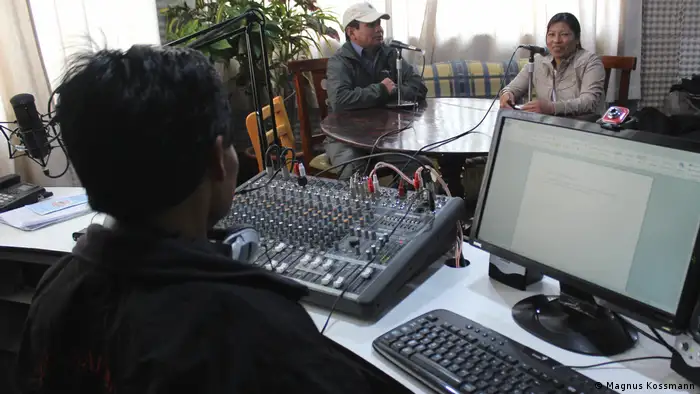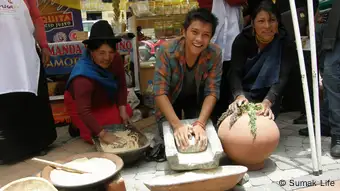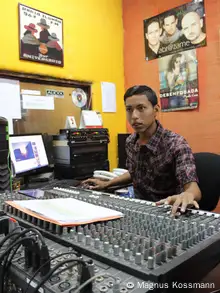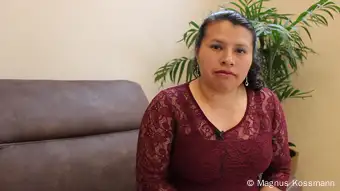Media Viability
Quinoa, Music Festivals, and Cakes for the Audience: Media Viability in Ecuador
Against the backdrop of an economic crisis, Ecuador’s financially weakened community media scene is getting creative to find new sources of revenue.
Juan Perez used to split his time between a radio studio in a colonial building in the Andean city Riobamba and quinoa fields in the surrounding Ecuadorian countryside—the foothills of the Chimborazo Volcano. Until recently, he was director of one of the oldest community radio stations in Latin America—Radio ERPE. Not only has the radio station contributed significantly to the literacy of the rural indigenous population since its inception in 1962, but this same population also has a vested financial interest in the small broadcaster. Through a cooperative with mostly indigenous quinoa farmers, the radio station sells and even exports its own brand of quinoa products: The premises of the radio station, an old colonial building, also houses a small shop, where the cooperative's Quinoa and other agricultural products are sold to the public. The income generated through the cooperative is distributed amongst its members and contributes to the maintenance of the radio station.
Such creative approaches come at a time when many community radio stations struggle with financial planning—but this situation is by no means new for the stations. From military shutdowns to economic crisis, over the decades community radio stations have had to continuously adapt to hardships and new challenges. More recently, the Communication Law of 2014, although controversial in its limits to press freedoms, promised better access to advertising income and access to frequencies for community media. But many of these promises hardly materialized.
In 2017, with the change in government and a hard-hitting financial crisis, public spending for information campaigns and advertising was drastically reduced. Within a very short period, radio stations that depended on this type of income lost an important revenue source—for some, this meant up to 70 per cent drop in their gains (CORAPE; 2018). This year has brought even more challenges. Lockdowns, restrictions and an economic crisis have crippled the advertising sector—and ad revenue for broadcasters has dropped even further.
Media viability strategy, open mindset included
"Many of us don't understand the market or how businesses work. This makes us afraid, and this fear stops us from trying new things that could help us improve our revenues," said Perez. According to him, many community radio stations like ERPE have a strong ideological origin but are now having to "sell" communicational products and understand the market and its dynamics.
At the same time, stations like Radio ERPE lack neither creativity nor support. Radio ERPE is a member of the network CORAPE, a community media network consisting of 36 members across Ecuador. CORAPE supported its members through a media viability strategy. Participating radio stations like Radio ERPE chose selected areas for development—some working on improving their news programs or finding innovative ways to connect with their audiences, while others worked on growing alternative income projects like quinoa cultivation or traditional music festivals. The consultational process included self-assessments for the radio station staff to have strategic visions about their desired futures, how they want to achieve them and what they need to get there.
Radio is not dead yet
In Ecuador, much like other parts of the world, commercial advertising has shifted away from radio to online spaces. Recently, traditionally radio-based community media have adapted and improved their presence online—through websites, social media platforms, and by video live-streams. Radio Sonoonda Internacional, a community radio station in the picturesque city of Cuenca, also participated in CORAPE's assessment and advisory process. Mariana Guamancela managed the radio station at the time of the review process. For her, the aim was to be visible to the radio station's listeners. CORAPE's consulting service has helped strengthen the news programs, she said, through "improving our interview techniques, hiring new presenters and installing cameras to live-stream our shows."
But media viability not only relies on income generation or strong programming. A close connection to audiences is equally important. During her time at Radio Sonoonda Internacional, Guamancela revealed one of their tricks for building this relationship: "Every week we raffle a cake for our listeners, sponsored by a bakery. But we don't deliver the cake, we hand out a voucher that the winner must come and collect, and then take to the bakery. This way, the listener gets to know the radio station as well as the sponsor—people feel like the radio station is their own."
Despite the current crisis—or possibly because of it—the relevance of local and community media has become even more important. Many community and local media are reporting increases in audience numbers and increased interaction especially on social media and chat apps. The future challenge will be to get to know these new audiences, understand their needs and interests, and harness these new trends to improve the viability of these media outlets.
CORAPE’s work is supported by DW Akademie.
A recently published guide(which can be downloaded in both English and Spanish as both a web version and in high resolution below) illustrates case studies and best practices from the common project.
DW recommends
WWW links
Downloads
- Date 12.11.2020
- Author Magnus Kossmann
- Feedback: Send us your feedback.
- Print Print this page
- Permalink https://p.dw.com/p/3kYKI
- Date 12.11.2020
- Author Magnus Kossmann
- Send us your feedback.
- Print Print this page
- Permalink https://p.dw.com/p/3kYKI




